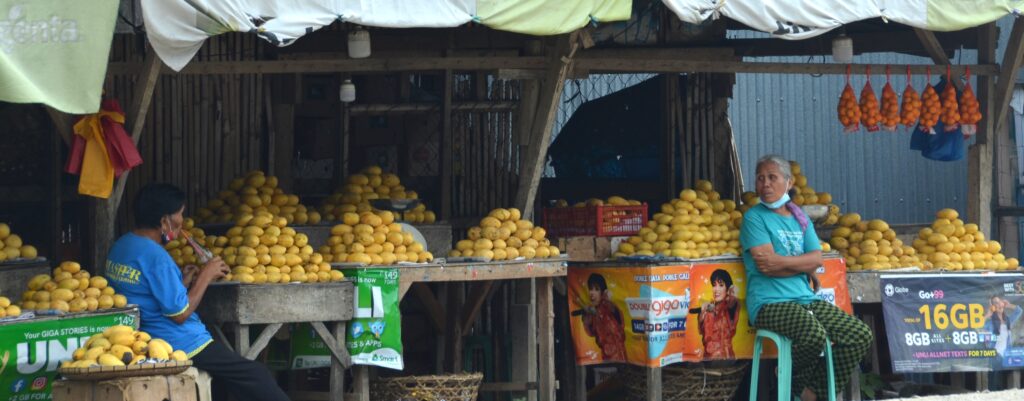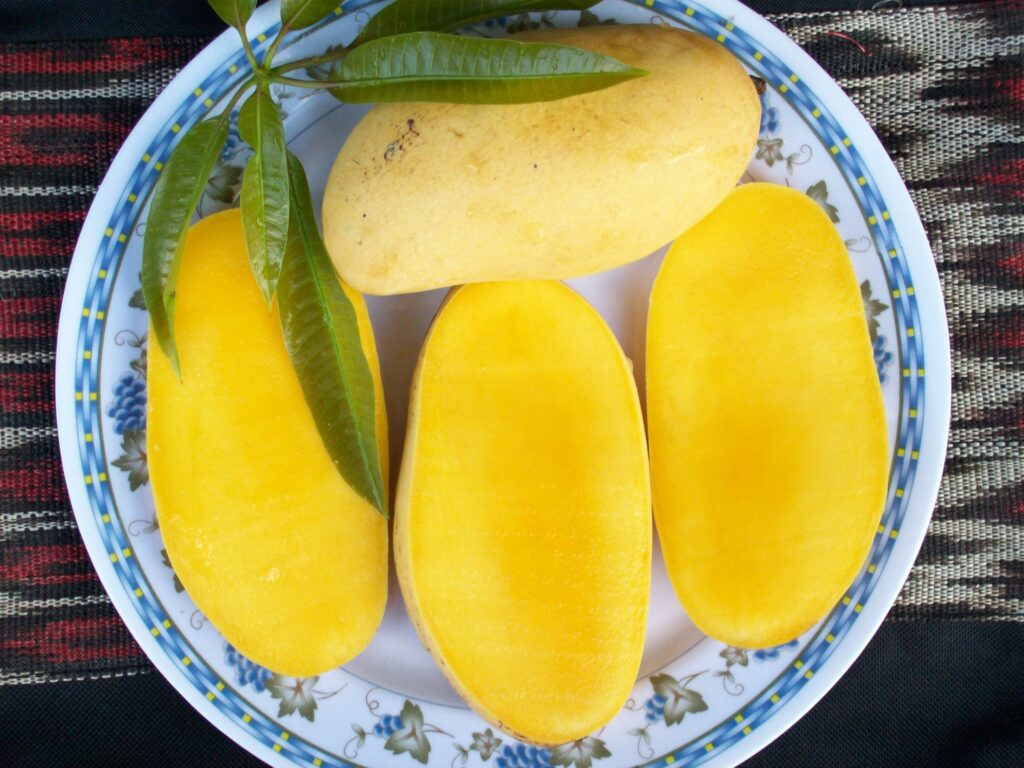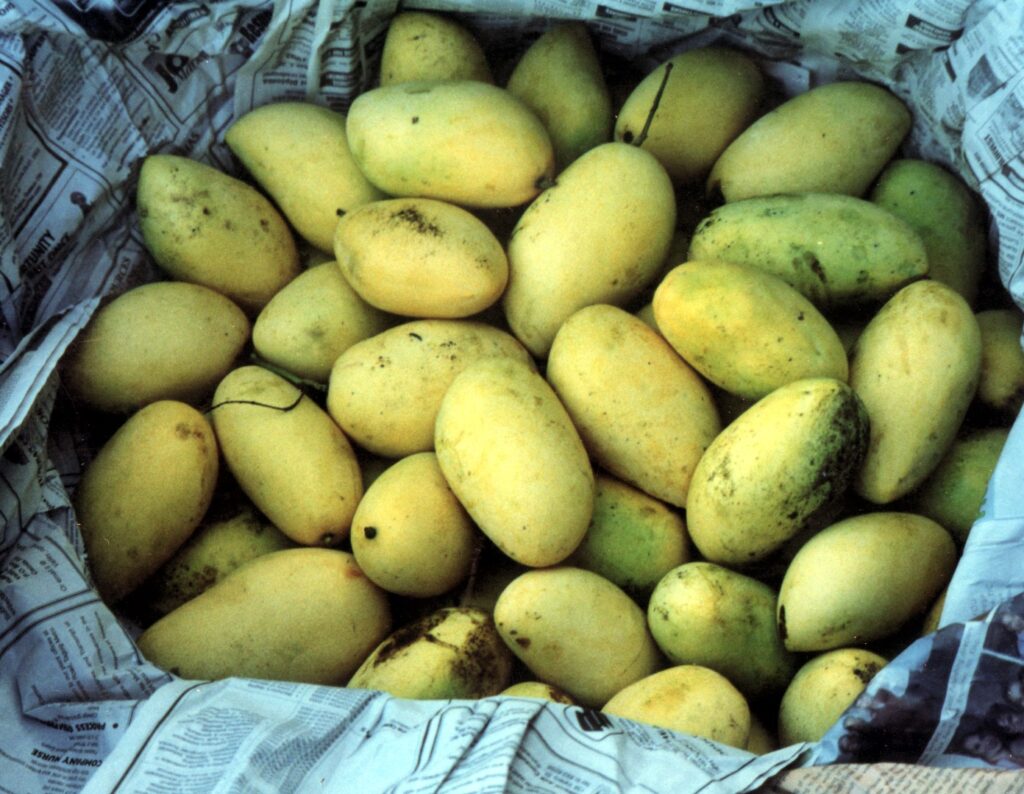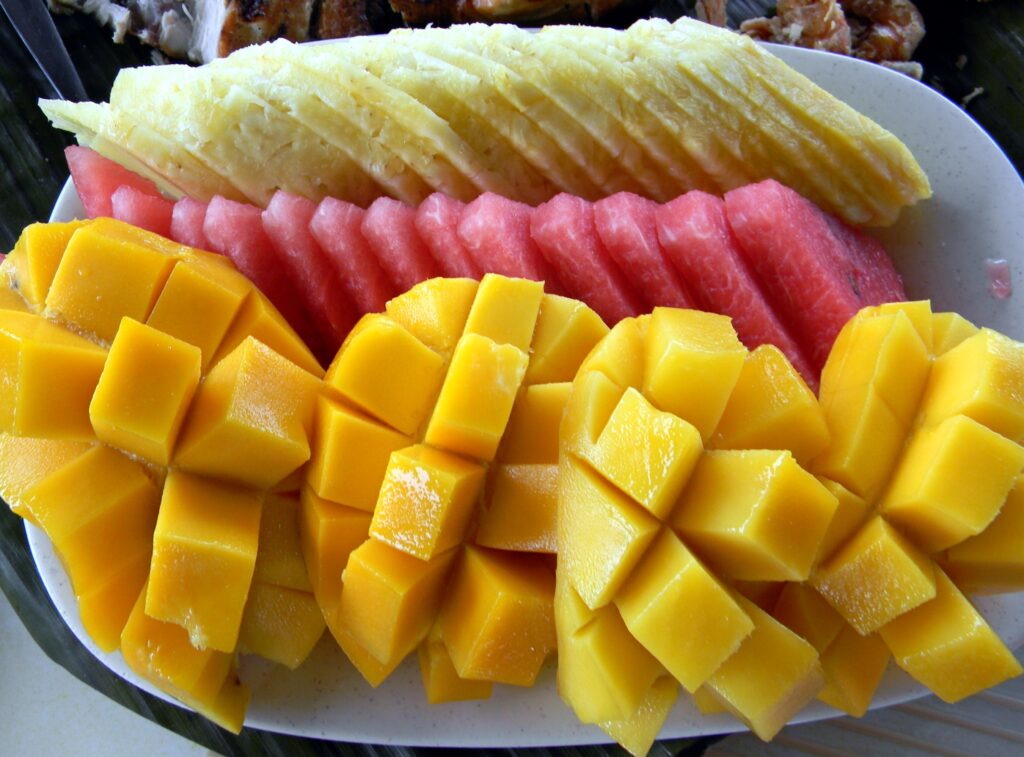Text and Photos by Henrylito D. Tacio

When it comes to mango, Philippine mangoes are the number one. “They are the best in the world,” said Dr. Kenneth Y. Hartigan-Go, the director of Food and Drug Administration. Dr. Marimel Yap-Veloso echoed the same sentiment, “I’ve tried mangoes from Mexico and other countries – nothing comes close to the Philippine mango.”
Larry Stoffel, an American who is married to a Filipino, confirmed this. “The rich juicy flavored mango from the Philippines is the most fantastic fruit I have ever tasted,” he revealed. “It’s true that we import mangoes from other countries but those imports cannot duplicate the mangoes I have eaten in Bohol. I miss the mangoes and can’t wait until I can have some more when I go back there.”
Mango is very popular around the world because it is a vitamin powerhouse. “One small mango provides a quarter of your recommended daily allowance for vitamin C, nearly two thirds of your daily quota for vitamin A, good amounts of vitamin E and fiber. They also contain vitamin K, phosphorus and magnesium. Mangoes are particularly rich in potassium,” wrote Fiona Wilkinson, author of “Health Benefits of Mangoes.”
Mango is also considered a ‘high volume’ food; it means you get a lot of food for a relatively small amount of calories. “One mango contains around 135 calories,” wrote Wilkinson. “However, they are quite high in natural sugar with one mango containing around 30 grams.”
Mango, being high in calories and carbohydrates, is good for those who are trying to gain weight. As it is high in iron, mango is said to be very good for pregnant women as well as for people suffering from anemia.’
“Mango has three times the vitamin C of a single orange or apple and important minerals essential to prevent cancer and other diseases,” said Dr. Martin Hirte, a German health food researcher and pediatrician.
In the Philippines, mango is the third most important fruit (after banana and pineapple) in terms of volume of production. The fruit has been tagged as a winning crop in the export market. In 2011, the country exported at least US$50 million worth of fresh, dried, and processed mangoes.
Despite the over 65,000 tons of mangoes exported in 2011, the supply still fell short of demand. “The shortage of supply in the country is brought about by factors such as climate change, pests and diseases, and postharvest losses,” said Dr. Patricio S. Faylon, executive director of Philippine Council for Agriculture, Aquatic and Natural Resources Research and Development (PCAARRD), adding that the poor harvest practices and lack of appropriate facilities alone contribute to about 15% to 35% loss in the total produce.
“With the world market demand for mango rapidly growing, several measures must be done to improve harvesting and postharvest handling to prime up the Philippine mango industry,” Dr. Faylon suggested. “Because mango is highly perishable, prone to mechanical damage, and susceptible to postharvest diseases, its quality must be ensured right along the supply chain.”
The PCAARRD, a line agency of the Department of Science and Technology (DOST), has come up with “Mango Harvesting and Postharvest Handling,” a booklet that provides information in proper harvesting, post-harvesting handling and disease control, and packaging of mango.
Harvesting
Among the materials needed for harvesting are bamboo ladder, picking pole, rope, newsprint and “kaing.” “Harvesting should be done at the proper stage of maturity,” the 12-page booklet states. “This determines the keeping and eating quality of the fruits.”
Factors affecting the rate of fruit maturity include climate, elevation of the area, and physiological status of the three at the time of flower induction. “The number of days from potassium nitrate spraying is commonly used to determine fruit maturity for harvesting,” said another PCAARRD publication, Mango Production Manual.
Generally, fruits can be harvested 105-130 days after flower induction. The fruit matures faster during the hot dry months. However, maturity takes more than 115 days during colder months.
The following are the maturity indices used as guide in harvesting: flat shoulder at the stem end (pedicel), full cheeks, presence of white powdery deposits on the peel (called “bloom”), creamy yellow pulp, and higher density as evidenced by sinking of 80% (12 of 15 fruits) or more in a 1% salt solution (10 grams of salt dissolved in one liter of water).
Harvesting must not be done too early in the morning. “(Doing so) causes rapid flow of latex from the pedicel-end,” the manual informs. “Harvest the fruit when the leaves are dry from 9 am to 3 pm.”’
For small trees, handpicking is done. For large and tall trees, the mango manual suggests this: “Tie one end of the rope to your body and the other end to the collecting basket (lined with paper on side and bottom). Climb up the tree. Hang the basket freely on one big branch. Untie the end of the rope from your body and tie it on another big branch nearby. Now you can start picking the fruits using a picking pole. Once full, transfer the fruits from the poles to the collecting basket. When full, lower the basket slowly to the ground for unloading by another person.”’
When the fruits are already on the ground, they “are sorted according to their market quality and size,” the booklet says. “Sorted fruits are packed in plastic crates with newspaper lined in-between layers of fruits. Importing countries have different sets of requirements and standards on exportable grade mangoes.”
Hot water treatment
The hot and humid conditions of the Philippines favor the development of mango diseases such as anthracnose and stem end rot. To reduce the incidence or severity of these diseases, especially for mangoes harvested during the rainy season, the booklet recommends the harvested mango fruits to undergo hot water treatment (HWT).
“In HWT, the fruits are dipped in hot water (52º to 55ºC) for 10 minutes followed by hydrocooling in tap water for another 10 minutes,” the booklet instructs. “After hydrocooling, the fruits are air-dried (either inside or outside the crates) for about 30 minutes before packing.”
Here’s how HWT is done. First, fill the tank with clean water (about three-fourths of the total depth of the tank). Then, heat the water to 55ºC. Check water temperature at different points of the tank using a thermometer. When the water is already hot, put the mangoes to be treated in plastic crates without overfilling. Dip the crates in hot water for 10 minutes. Stir water occasionally (if no pump is available). After 10 minutes, remove crates from the tank. Cool treated mangoes in tap water for 10 minutes. Finally, air-dry the fruit for 30 minutes before packing. Electric fans or industrial fans can be used to hasten the drying of fruits.
According to the mango manual, the benefits derived from HWT are the following: (1) when performed not later than two days after harvest, HWT reduces disease incidence and severity or at least delay the onset of the disease so that the fruits may have ripened and consumed long before the disease symptoms would have appeared; (2) HWT removes dirt, dust, latex stain, and chemical residues; and (3) the treatment directly benefits the retailers, consumers, and processors by reduction of losses and increase in quality.
Packing and storage
The type of container to use depends on the intended market. “The best container for mangoes is the plastic crate,” the booklet says. “The plastic crates are durable, easy to handle and clean, and prevent injury during transport.”
Fruits intended for export to Japan and South Korea are packed in a different manner. The fruits, wrapped in thin paper, are packed pedicel-down in a cell type fiberboard carton in a single layer with a net capacity of 5 kilograms.
For Hong Kong and China markets, cartons with a capacity of 12 kilograms are used. The box is divided down the middle with a vertical driver and clean papers are used as liners in-between layers of fruits.
Mango fruits should be exposed to low temperatures to extend the marketable life. “At the recommended storage temperature of 12.5ºC, mangoes can be stored for two weeks, although ripening will set in towards the end of the second week,” the booklet says.
Storage life of Philippine mango fruits – also called “Carabao” mangoes – can be extended for 29 days when kept under controlled atmosphere (CA) condition at 12.5ºC to 13ºC. “In this technique, the level of oxygen in the storage room is maintained at 5-6% while the carbon dioxide concentration is 4-5%. Mangoes are almost 50-70% yellow when taken out of CA storage and completion of ripening occurs when fruits are transferred at a temperature of 20ºC to 23ºC.”
History records showed that mangoes originated from the Myanmar region, where it was known to have been cultivated 4,000 years ago. Buddhist monks took mango to Malaya and eastern Asia in the 5th century B.C. Later in the 18th century, Portuguese explorers would introduce mango in Brazil.
From there, mango cultivation would reach Florida, United States in 1833 and eventually in Africa and in other lowland tropical and sub-tropical areas. Today, there are about 83 mango-producing countries in the world. – ###



